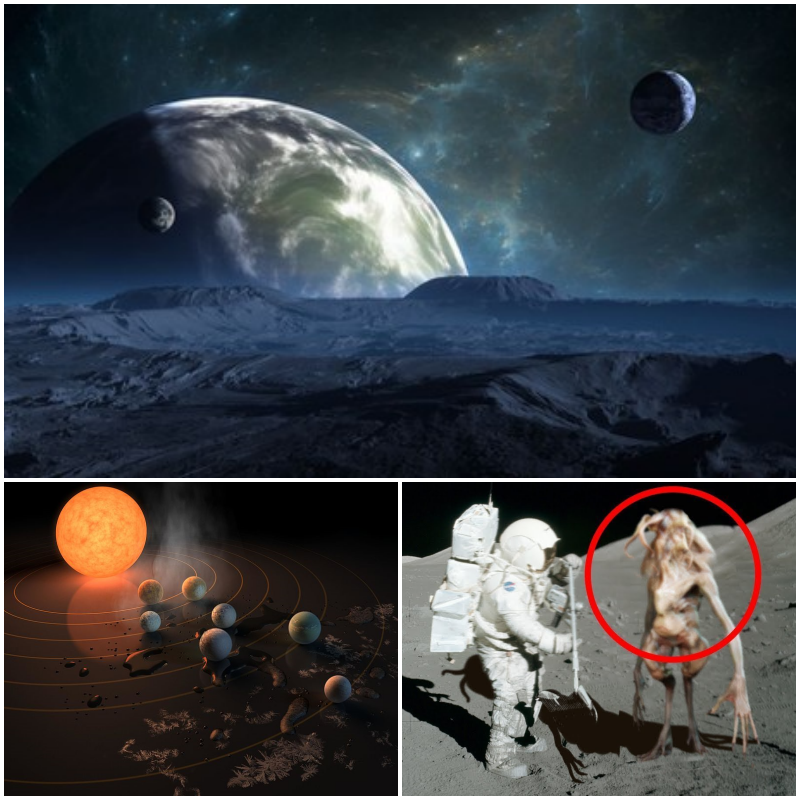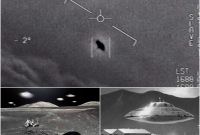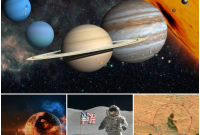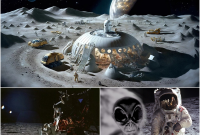The quest to uncover extraterrestrial life has long fueled humanity’s fascination with the cosmos. Recent strides in space exploration have propelled us closer to this elusive goal, with NASA scientists pinpointing seven celestial locales within our own Solar System that hold promise for harboring alien life. In this comprehensive exploration, we embark on a journey to delve deeper into these intriguing environments and the tantalizing prospects they offer for discovering life beyond Earth.

Mars: With its stark, desert-like landscapes and enigmatic history, Mars has long captured the imagination of astronomers and astrobiologists alike. Evidence gathered from NASA’s robotic missions, including rovers and orbiters, suggests that Mars once hosted liquid water on its surface, making it a prime candidate for potential microbial life. Recent discoveries of methane in the Martian atmosphere have further bolstered this hypothesis, hinting at the possibility of subsurface microbial ecosystems waiting to be uncovered.
Europa: Jupiter’s moon Europa stands out as one of the most promising locations for extraterrestrial life within our Solar System. Beneath its icy crust lies a vast subsurface ocean, kept liquid by tidal heating generated by gravitational interactions with Jupiter and its neighboring moons. Observations by NASA’s Galileo spacecraft and the Hubble Space Telescope have detected plumes of water vapor erupting from Europa’s surface, indicating the presence of a potentially habitable environment ripe for exploration.
Enceladus: Saturn’s moon Enceladus is another tantalizing destination in the search for alien life. Beneath its icy exterior lies a global ocean of liquid water, which periodically erupts through surface fractures in the form of towering geysers. Analysis of data from NASA’s Cassini spacecraft has revealed the presence of complex organic molecules in these plumes, providing further evidence for the existence of hydrothermal vents and potentially habitable conditions beneath the moon’s icy shell.

Titan: Saturn’s largest moon, Titan, offers a unique blend of Earth-like characteristics and alien landscapes. Its thick atmosphere, rich in nitrogen and methane, shrouds a surface adorned with lakes, rivers, and seas of liquid hydrocarbons. While surface temperatures are too cold for life as we know it, the presence of organic molecules and prebiotic chemistry hints at the possibility of exotic forms of life adapted to Titan’s frigid environment.
Venus: Often referred to as Earth’s “evil twin,” Venus has recently emerged as a surprising contender in the search for extraterrestrial life. Despite its inhospitable surface conditions, recent observations have detected the presence of phosphine gas in Venus’s clouds—a potential biosignature that could indicate the presence of microbial life. NASA’s proposed missions, including VERITAS and DAVINCI+, aim to unravel the mysteries of Venus’s atmosphere and surface to determine the viability of life on this hostile world.
Ceres: As the largest object in the asteroid belt between Mars and Jupiter, Ceres is a dwarf planet with a complex geological history. Data from NASA’s Dawn spacecraft has revealed the presence of water ice and organic molecules on Ceres’s surface, suggesting the possibility of subsurface oceans and potential habitats for microbial life. Future missions to Ceres could provide valuable insights into the dwarf planet’s potential for hosting extraterrestrial life.

Triton: Neptune’s largest moon, Triton, boasts a diverse array of geological features and enigmatic phenomena. Cryovolcanoes erupting nitrogen gas and icy particles from Triton’s surface hint at the presence of subsurface reservoirs of liquid water and organic compounds. While its extreme cold and distance from the Sun pose challenges for life as we know it, the discovery of complex organic molecules on Triton’s surface suggests the possibility of unique forms of life adapted to its harsh environment.
In conclusion, the identification of seven potential extraterrestrial havens within our Solar System represents a significant milestone in humanity’s quest to uncover the mysteries of the cosmos. From the icy oceans of Europa and Enceladus to the methane lakes of Titan and the clouds of Venus, each of these celestial locales offers unique opportunities for exploring the origins and diversity of life beyond Earth. As we continue to probe the depths of space and unlock the secrets of the universe, we stand on the precipice of a profound discovery that could forever alter our understanding of life’s place in the cosmos.




